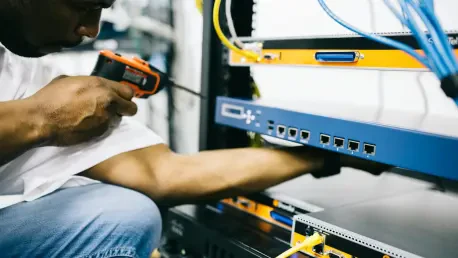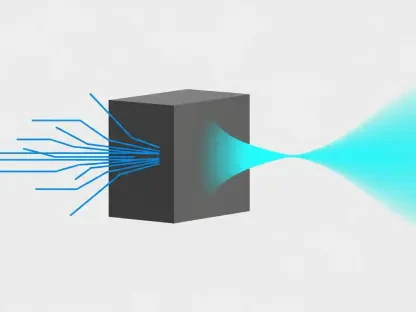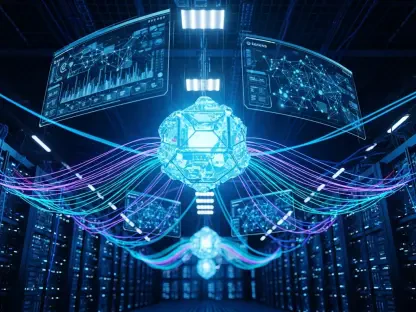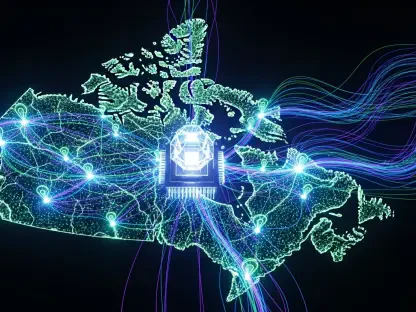In a startling revelation that underscores the fragility of modern communication systems, the United States Secret Service (USSS) recently uncovered and dismantled a sophisticated telecommunications network in the tri-state area of New York, New Jersey, and Connecticut. This illicit operation, discovered during the 80th anniversary of the United Nations General Assembly, posed a severe threat to cellular services in New York City at a time when over 100 world leaders and delegations were gathered. The timing and location of this discovery amplify its significance, highlighting how malicious actors could exploit critical infrastructure during high-stakes international events. Such incidents reveal the urgent intersection of cybersecurity and national security, where the potential for widespread disruption is not just a theoretical concern but a tangible risk requiring immediate and decisive action.
Unveiling a Hidden Network
Scope and Scale of the Operation
The investigation by the Secret Service exposed a sprawling telecommunications setup that was as alarming as it was sophisticated. Over 300 SIM servers and 100,000 SIM cards were seized within a 35-mile radius of the UN headquarters in Midtown Manhattan. This equipment had the chilling capacity to disable mobile towers, flood networks with traffic, and interfere with emergency dispatch systems. According to USSS officials, the network could send text messages to the entire U.S. population in a mere 12 minutes or launch distributed denial of service (DDoS) attacks. Such capabilities could cripple communication during a crisis, like a terrorist attack, leaving authorities and citizens vulnerable. Special Agent in Charge Matt McCool described the operation as “well-organized and well-funded,” pointing to the involvement of diverse malicious entities, including nation-state actors and organized crime groups, all communicating through encrypted channels to evade detection.
Beyond the sheer volume of equipment, the professional nature of the setup added to the gravity of the threat. The SIM farms, hidden in abandoned apartment buildings across at least five undisclosed locations, featured neatly arranged and labeled gear with meticulously secured cables. Experts from the telecom and cybersecurity sectors noted that each SIM box likely contained around 256 ports with corresponding modems, enabling bulk messaging at unprecedented speed. This level of technical sophistication suggests that the perpetrators were far from amateurs, likely operating as part of a larger, coordinated effort. The ability to execute mass communication on this scale, which would be impossible for an individual, raises serious concerns about the potential misuse of such technology during critical moments of national or international importance.
Triggers and Culprits Behind the Threat
The operation came to light following anonymous telephone threats earlier this year targeting three U.S. government officials, including a Secret Service employee and two White House staffers. Further investigation connected the SIM farm to swatting incidents on Christmas Day two years ago, which targeted public figures such as Congresswoman Marjorie Taylor Greene and Senator Rick Scott. Three individuals—two Romanians, Thomasz Szabo and Nemanja Radovanovic, and an American, Alan Filion, known as “Torswats”—were linked to these acts and have since been convicted on related charges. While the extent of foreign state involvement remains under debate, insights from cybersecurity experts suggest that financial crimes, rather than geopolitical motives, may have been the primary driver. The concentration of this network in a tight geographic area near a major urban center further underscores the audacity and strategic planning behind the scheme.
Adding to the complexity is the origin of the equipment itself, with some components believed to have been smuggled into the country, disguised as innocuous items like audio amplifiers from overseas sources. This raises questions about the vulnerabilities in supply chains and border security that allowed such a large-scale operation to take root unnoticed. Ben Coon from a prominent cybersecurity firm emphasized that while this wasn’t the largest SIM farm ever discovered in the U.S., its dense concentration in a small area made it uniquely dangerous. The ability to operate undetected in close proximity to a global hub like New York City during a significant event illustrates the evolving tactics of criminal networks and the challenges law enforcement faces in staying ahead of such threats.
Implications and Future Safeguards
National Security Risks at High-Profile Events
The dismantling of this telecommunications network has brought into sharp focus the growing threat to national security posed by illicit telecom operations, especially during high-profile international gatherings like the UN General Assembly. The capacity of such networks to disrupt critical communication infrastructure could have catastrophic consequences in moments of crisis. Secret Service Director Sean Curran stressed the urgency of addressing imminent threats to protectees, affirming that swift investigation and neutralization of such risks remain a top priority. This incident serves as a sobering reminder of the vulnerabilities inherent in modern communication systems, where a single breach could undermine emergency response capabilities and public safety on a massive scale, particularly when global leaders are convened in one location.
Moreover, the potential for these networks to be weaponized by a range of actors—from terrorist organizations to cartels—adds layers of complexity to the security landscape. The ability to interfere with emergency dispatch systems or flood networks with malicious traffic could exacerbate chaos during an already tense situation. This operation’s proximity to the UN headquarters amplifies the stakes, as any disruption could have international repercussions, affecting diplomatic relations and global stability. The consensus among officials and experts is clear: robust countermeasures must be developed to protect against cyber and telecom-based threats. Strengthening infrastructure resilience and enhancing real-time monitoring are critical steps to prevent similar schemes from taking hold in the future.
Evolving Challenges of Criminal Networks
The sophistication and international scope of the criminal networks involved in this incident highlight a troubling trend in modern threats. The collaboration between diverse actors, potentially including organized crime and nation-state players, demonstrates the need for coordinated responses from law enforcement and cybersecurity experts worldwide. Differing perspectives on the primary motivations—whether financial gain or broader security threats—underscore the multifaceted nature of these operations. While some experts point to monetary incentives as the driving force, others caution against underestimating the potential for such networks to serve as tools for terrorism or geopolitical disruption, especially given the encrypted communication methods employed by the perpetrators.
Addressing these challenges requires a proactive approach that goes beyond merely reacting to discovered threats. International cooperation must be prioritized to disrupt the supply chains and financial networks that enable such operations. Additionally, investing in advanced detection technologies and training for law enforcement can help identify and neutralize illicit telecom setups before they cause harm. The successful takedown of this network by the Secret Service marked a significant victory, but it also exposed the persistent gaps in safeguarding communication infrastructure. Moving forward, policymakers and industry leaders must collaborate to implement stricter regulations and innovative solutions, ensuring that the rapid evolution of criminal tactics does not outpace the defenses designed to counter them.









